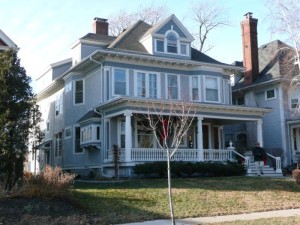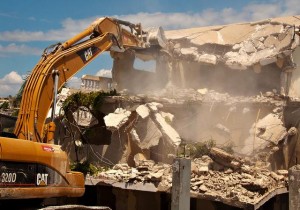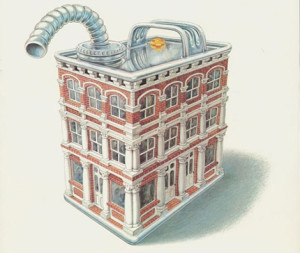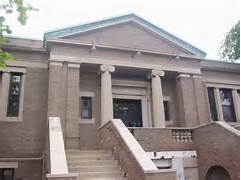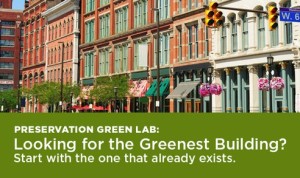
Welcome to the
Healy Project
Join us on Facebook
Send us an Email
Happy Earth Day, Zero-Credibility City of Minneapolis

On this day that celebrates Planet Earth, residents of our beautiful planet are urged to conserve dwindling resources by recycling everything from plastic bottles to buildings. The “Zero Waste” initiative of the City of Minneapolis similarly encourages citizens to conserve resources:
“Zero Heroes strive to have Zero Waste. They do this by working to first prevent waste, and then by recycling all they can of the waste that remains. To lower this amount of waste we need to take a step beyond recycling: waste prevention. Waste prevention is reducing the amount of waste and the toxicity of waste. Waste prevention saves natural resources, energy, and may even save you money.” City of Minneapolis Web Site

Minneapolis, the Zero Waste city, wants us to recycle and ride bikes–while the City sends hundreds of tons of historic house to the landfill.
However, while the City Solid Waste and Recycling Department is urging citizens to compost and recycle bottles and papers, the City Planning department has been facilitating the demolition of an historic house–which will send 180+ tons of materials to the landfill. This disconnect between saying and doing shows a gobsmacking hypocrisy: Citizens recycle while the City cancels out their efforts by a thousandfold in the demolition of one house.
“The facts are in – no matter how much green technology is employed, any new building represents a new impact on the environment.It makes no sense for us to recycle newspapers, bottles, and cans while we’re throwing away entire buildings and neighborhoods.It’s fiscally irresponsible and entirely unsustainable.”Jerri Hollan, FAIA
“Zero Waste” makes zero sense when the City shows blatant contempt for the most important piece of sustainability–recycling existing buildings. City Planning sent staffer John Smoley to the HPC twice to argue for its “save only the best buildings in the best neighborhoods” policy–and twice, after vigorous debate, the HPC affirmed that that the Orth House, 2320 Colfax Ave. S. is historic and should be placed under interim protection while a designation study is completed. But when the owner’s appeal to demolish was heard before the City Zoning and Planning, CM Lisa Bender, taking the unsupported testimony of the appellants as fact, declared that no viable alternatives existed to wrecking the house, and made a motion to overturn the HPC’s decision. The motion passed with no debate.
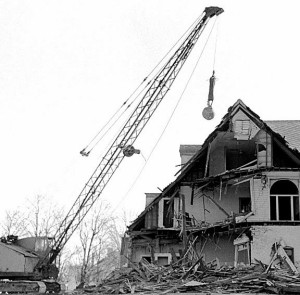
What the City plans for the Orth House and others in the Wedge and other not-good-enough neighborhoods.
“By 2030, we will have demolished and replaced nearly 1/3 of our current building stock, creating enough debris to fill 2,500 NFL stadiums. How much energy does this represent? [E]nough to power California (the 10th largest economy in the world) for 10 years. By contrast, if we rehabilitate just 10% of these buildings, we could power New York for over a year.”UrbDeZine SanFrancisco
The hypocrisy of the City regarding recycling would be laughable if it weren’t so appalling. Minneapolis needs to start practicing what it preaches. Citizens recycling cans and bottles is wasted effort if the government is not encouraging the recycling of buildings.
Don’t jive us, City of Minneapolis. Be a Zero Hero and affirm your alleged commitment to Zero Waste. Allow the historic Orth House to be recycled. The Greenest Building is the one standing.
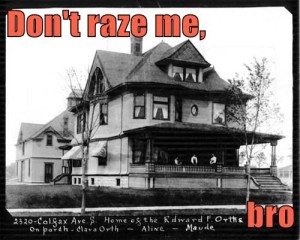
Demand that Minneapolis, the “Zero Waste” City, allow the ordered designation study for the historic Orth House to be done.
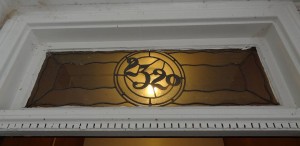
Last week the Minneapolis Zoning and Planning Committee, after listening to an hour of testimony, voted on a motion from CM Bender (Ward 10) to approve the owner’s appeal to demolish the Orth House, 2320 Colfax Ave. S. Lisa Goodman (Ward 7) was the lone dissenter. This vote overturned the decision of the Heritage Preservation Commission to allow the house interim protection (180 days) while a designation study is done. CM Bender must be called to account.
Last year the HPC declared the house to be an “historic resource” and the City Council unanimously upheld this decision. The owner, Michael Crow, and developer, Michael Lander, came back to the HPC this year, saying a designation study hadn’t been done and asking again for a permit to demolish an historic resource. The HPC reaffirmed their previous decision, and ordered a study.
Why wasn’t a designation study done? So far, we have no answer. The issue before the City Council is whether or not viable alternatives to demolition exist for the house. Ignoring the testimony of experts like architect John Cuningham (whose firm did the Uptown small area plan) and structural specialist John Jepsen, who both examined the house inside and out, CM Bender based her opinion on the testimony of those who would reap substantial financial gain from the house’s demolition: the owner, his broker, and the developer.
CM Bender declared that it is not feasible to rehab the house as a single-family home. No one testifying suggested that option, focusing instead on the need for affordable multi-family housing in the city. The owner, Michael Crow, declared that he has spent $250k on improvements to the house. City inspections records show that he spent less than $24k. Last year Crow’s broker, Tom Dunne, when asked directly if he marketed the property on residential MLS, said yes, but admitted this year that he has not. Is the Minneapolis City Council simply going to accept the claims of the owner and broker as fact? Shouldn’t all allegations by appellants be fact-checked by the City?

The City Council should not be taking the word of the owner or developer, or anyone else, on faith. Unless the designation study is done, we have no way of knowing who is giving an accurate, fact-based assessment of the house. Since the vote last year, nothing has changed with the condition of the house or the City ordinances governing historic resources. Ask the CMs on Z&P who voted to grant the house protection last year to justify their change of position (Kevin Reich 1, Barbara Johnson 4). Ask the other CMs who voted last year to follow correct procedure and allow the designation study to go forward (Cam Gordon 2, Elizabeth Glidden 8, John Quincy 11). Copy Mayor Betsy Hodges, who served as CM Ward 13 last year. Ask the new CMs to let the study proceed. Send an e-mail to CM Goodman, thanking her for her support.
Let the City Council’s decision about the Orth House be based on verifiable facts, not the appellants’ unsupported allegations.
The full vote of the City Council on this motion will be held, without public hearing, on Friday, April 25th, at 9:30.
Contact city council members NOW and ask that the City follow correct procedure and allow the designation study to be done. Keep your message short and to the point. Request a response. For a list of current Council members, see http://www.ci.minneapolis.mn.us/council/
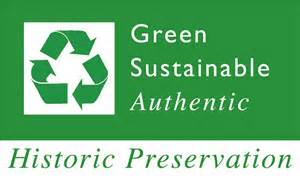 _________________________________________________________
_________________________________________________________
What the facts are:
Re: Sustainability. While the City is touting its “Zero-Waste” initiative, City Council is heading towards approving the demolition of a sound, historic house, sending 180+ tons of materials to the landfill. The City and the developer are using “trickle-down” sustainability, putting the responsibility on the project’s residents, who are expected to sell their cars, bike, use public transportation, and recycle.

Minneapolis, the Zero Waste city, wants us to recycle and ride bikes–while the City sends hundreds of tons of historic houses to the landfill.
Re: Density. The developer claims that his so-called “Eco-flats” will provide needed density on transit hubs, a goal of the City Planning Dept. Density and transit hubs already exist in the Wedge. These amenities are there now, new development or not. The population of the Wedge is being increased by 47% by new development along the Greenway. How much density can the neighborhood absorb?
Re: Neighborhood support. The Lowry Hill East Neighborhood Association does not support the Lander development. A motion to approve the project did not pass the board. A survey of e-mails to the City regarding this issue shows overwhelming support for the house by residents with addresses in the Wedge.
Re: Affordability. Rent in new buildings, to be economically feasible for the developer, must be set at market rate or higher. The 1,800 new units in the Wedge are luxury housing. The Lander project will bring more gentrification, marketing to affluent white people. The affordable housing is the existing houses and apartments, not new construction. A perfect site for an apartment project is available at Franklin and Park. Why doesn’t the City urge Lander to build there, rather than facilitating the wrecking of an historic resource?
Re: Preservation. As noted in the 1981 article in Twin Cities magazine, 2320 Colfax is the transitional design in the career of celebrated master builder Theron Potter Healy. The Heritage Preservation Commission determined that the house is an historic resource. But the City thinks historic houses are worth saving only if they are in “good” neighborhoods. As CM Goodman observed, “This house will see an untimely death as a result of its location. If this was in Lowry Hill or Kenwood we would not be having this conversation.”
STOP DEMOLITION
Ask CMs to pay attention to the presentation of these facts at Z&P last week. Demand that the City follow protocol and allow the study ordered by the HPC to be completed.
Council Members by Ward:
1. kevin.reich@minneapolismn.gov, 2. cam.gordon@minneapolismn.gov, 3.jacob.frey@minneapolismn.gov, 4. barbara.johnson@minneapolismn.gov, 5.blong.yang@minneapolismn.gov, 6.abdi.warsame@minneapolismn.gov, 8.elizabeth.glidden@minneapolismn.gov, 9.alondra.cano@minneapolismn.gov, 10.lisa.bender@minneapolismn.gov,11. john.quincy@minneapolismn.gov, 12.andrew.johnson@minneapolismn.gov, 13. linea.palisano@minneapolismn.gov
Thank Lisa Goodman for her support 7.lisa.goodman@minneapolismn.gov
This Healy house, a design descendant of the Orth House, is on Lowry Hill.
Developers repeatedly trot out claims based on the tenets of New Urbanism: affordability, diversity, easy access, and sustainability. For example, as seen in the previous post, the Lander Group’s promotion of its 2320 Colfax project as “affordable” is not credible, given the rents required for units in new Wedge buildings. However, the Lander Group’s bogus claim of affordability is not the most egregious subversion of New Urbanist principles. A much more serious misrepresentation resides in the statement that this building will consist of “‘Eco-Flats – promoting ‘Green-Living’. . .close to and providing a variety of transportation options, services, recreation, and green space.”
What does this mean? Not that the building is green, but that the living in it will be green. How will this be green? By the developer putting in fewer parking spaces than will be needed for 45 units, providing an HourCar, a “variety of bike storage options”, and a bike-repair stand. First of all, the assumption that the majority of tenants won’t own cars is ridiculous. That’s an ideal of New Urbanist planning that is far from being realized. 80% of American adults own at least one car. If the project has the Wedge average of 1 1/2 tenants per unit, the complex could be short of parking by 34 spaces. Many workplaces are simply not accessible by public transportation, and many people who bike to work often suspend bike commuting during the winter. Second, the amenities available nearby (bus routes, bike paths, HourCar, parks, nearby shops and restaurants) are already there, and will be there, Lander project or not.
Using the prefix “Eco-” as a descriptor is a marketing ploy to suggest that this project will be good for the environment–which it most decidedly will not be. Wrecking the houses at 2320 and 2316 will cost the developer about $60k–to be added to construction costs–and would involve removing 250+ tons of building materials, excluding the foundations, to the landfill. Historic preservation is environmental preservation. According to the World Bank, “sustainable development recognizes that growth must be both inclusive and environmentally sound to reduce poverty and build shared prosperity for today’s population and to continue to meet the needs of future generations. It must be efficient with resources and carefully planned to deliver both immediate and long-term benefits for people, planet, and prosperity.”[1] The proposed Lander development at 2320 Colfax is decidedly inefficient in its use of resources. Ironically using the rhetoric of ‘green living,’ the developer seeks to destroy the Orth House and replace it with new construction–the least environmentally responsible option available.
Article after article about conservation reiterates the point that “green building” is an oxymoron. You can’t have both. As Jerri Holan, a Fulbright scholar and member of the AIA, points out: “The facts are in – no matter how much green technology is employed, any new building represents a new impact on the environment.It makes no sense for us to recycle newspapers, bottles, and cans while we’re throwing away entire buildings and neighborhoods.It’s fiscally irresponsible and entirely unsustainable.” [2]
The Minneapolis Heritage Preservation and City Council have determined the Orth House to be an “historic resource.” Razing historic buildings results in a triple hit on scarce resources. First, we are throwing away thousands of dollars of embodied energy. The greenest thing we can do is to continue the life of a building whose resources have already been extracted from our planet. Using data from the Advisory Council on Historic Preservation, we can calculate that the Orth House, at 6,400 square feet, embodies roughly 9.6 billion BTUS of energy, equal to 77,000 gallons of gasoline. If that building is torn down, all that embodied energy is wasted. What’s more, the demolition process itself consumes energy.[3]
The Lander website claims that their project would use “better construction techniques.” Hmm–better construction than what? Certainly not better than the house currently standing at 2320, which was built by T.P.Healy in 1893 of lumber from Minnesota’s virgin forests. The historic Orth House would be replaced with materials vastly more consumptive of energy. What is the Orth House built from? Timber, plaster, limestone, and bricks. These are the least energy consumptive of materials. The major components of new buildings, by contrast, are the most energy consumptive–plastic, steel, vinyl and aluminum.
An important part of New Urbanist strategy is the preservation of existing buildings and historic architecture. The reasons for this are twofold: historic preservation not only saves “places that matter” for future generations, but conserves rapidly dwindling natural resources and energy sources. The fact that the Lander project is a larger building than the Orth House does not offset the energy consumed in destroying the old one and building the new. Even if this building were LEEDS (Leadership in Energy and Environmental Design)-certified[4] and built on an empty lot (which it is not), it would take many decades to offset the loss of resources. “By 2030, we will have demolished and replaced nearly 1/3 of our current building stock, creating enough debris to fill 2,500 NFL stadiums. How much energy does this represent? [E]nough to power California (the 10th largest economy in the world) for 10 years. By contrast, if we rehabilitate just 10% of these buildings, we could power New York for over a year.”[5]
New building can never be greener than existing structures, yet Minneapolis keeps saying it espouses sustainability while demolishing dozens of buildings annually. At the root of the problem is the functional life of new buildings. Contemporary buildings are considered to be disposable even as they go up. Take, for example, the Metrodome and the 1981 Walker Community Library building. These structures stood on sites cleared of older buildings for their construction. Only three decades years later, they both were demolished, sending thousands of tons of building materials to landfills. Meanwhile, across the street from the third Walker library, the first 1911 Classical Revival library building still stands, adaptively reused as commercial space.
New Urbanism is a comprehensive philosophy of urban planning. But so far, Minneapolis has been dealing with demolition on a case-by-case basis. An owner wants to wreck an historic resource: staff representing City Planning say, sure, wreck away. . .There are better examples of Healy’s work. This process of finding better examples of this and that can go on until there is literally one Healy house left standing. Lander’s development could have a suitable place in Minneapolis, but not on the site of the Orth House. If 2320-2316 were vacant lots, the Lander project would have already been built. Minneapolis should not be curating a museum, but maintaining community character and identity.
Minneapolis must develop a policy dealing with demolitions that takes into account both historical and ecological resources. Marketing buzz words should not be a substitute for responsible urban stewardship.
“Our duty is to preserve what the past has had to say for itself, and to say for ourselves what shall be true for the future.”–John Ruskin
–T.B
C.A.C.

